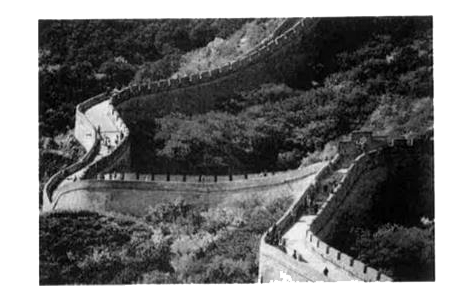Assume that Rayleigh's criterion gives the limit of resolution of an astronaut's eye looking down on Earth's surface from a typical space shuttle altitude of 420 km. (a) Under that idealized assumption, estimate the smallest linear width on Earth's surface that the astronaut can resolve. Take the astronaut's pupil diameter to be 5 mm and the wavelength of visible light to be 550 nm. (b) Can the astronaut resolve the Great Wall of China, which is more than 3000 km long, 5 to 10 m thick at its base, 4 m thick at its top, and 8 min height? (c) Would the astronaut be able to resolve any unmistakable sign of intelligent life on Earth's surface?

(a) ≈56m, (b) no, (C) no
Topper's Solved these Questions
- INTERFERENCE AND DIFFRACTION BOOK - RESNICK AND HALLIDAYCHAPTER - INTERFERENCE AND DIFFRACTION EXERCISE - PRACTICE QUESTIONS (Single Correct Choice Type)
66 Videos
- INTERFERENCE AND DIFFRACTION BOOK - RESNICK AND HALLIDAYCHAPTER - INTERFERENCE AND DIFFRACTION EXERCISE - PRACTICE QUESTIONS (More than One Correct Choice Type)
23 Videos
- INTERFERENCE AND DIFFRACTION BOOK - RESNICK AND HALLIDAYCHAPTER - INTERFERENCE AND DIFFRACTION EXERCISE - CHECKPOINT
6 Videos
- HYDROGEN ATOMBOOK - RESNICK AND HALLIDAYCHAPTER - HYDROGEN ATOMEXERCISE - PRACTICE QUESTIONS(Integer Type)
6 Videos
- MAGNETIC FIELDS DUE TO CURRENTSBOOK - RESNICK AND HALLIDAYCHAPTER - MAGNETIC FIELDS DUE TO CURRENTSEXERCISE - Practice Question (Integer Type)
4 Videos
Similar Questions
An astronaut is looking down on earth's surface from a space shuttle at an altitude of 400km. Assuming that the astronaut's pupil diameter is 5mm and the wavelength of visible light is 500nm. The astronaut will be able to resolve linear object of the size of about .
View SolutionOne astronut speaks with another astronaut on Moon. Can the other astronaut listen to the first astronaut?
View Solution
Knowledge Check
An astronaut is looking down on earth's surface from a space shuttle at an altitude of 400km. Assuming that the astronaut's pupil diameter is 5mm and the wavelength of visible light is 500nm. The astronaut will be able to resolve linear object of the size of about .
A0.5mB5mC50mD500mAn astronaut can't hear his companion at the surface of the moon because :
Aproduced frequencies are above the audio frequencyBthere is no medium for sound propagationCtemperature is too low during night and too high during dayDthere are too many craters on the surface of the moonAstronaut can jump higher on the moon's surface than on the earth because
Athere is no atmosphere on the moonBthe moon is smaller than the earthChe is weightless on the moonDthe force of gravity on the lunar surface is less than that on the earth
Can two astronauts talk on the surface of moon as they do on earth?Why?
View SolutionWhat will be the mass of an astronaut in a space satellite if at earth's surface the astronaut weighs 250 N ? (Take g=10ms−2)
View SolutionWhat will be the mass of an astronaut in a space satellite if at earth's surface the astronaut weighs 250 N ? (Take g=10ms−2)
View SolutionTo an astronaut is a spcaceship, the sky appears
View SolutionAn astronaut in a spsceship sees the outer space as
View Solution
